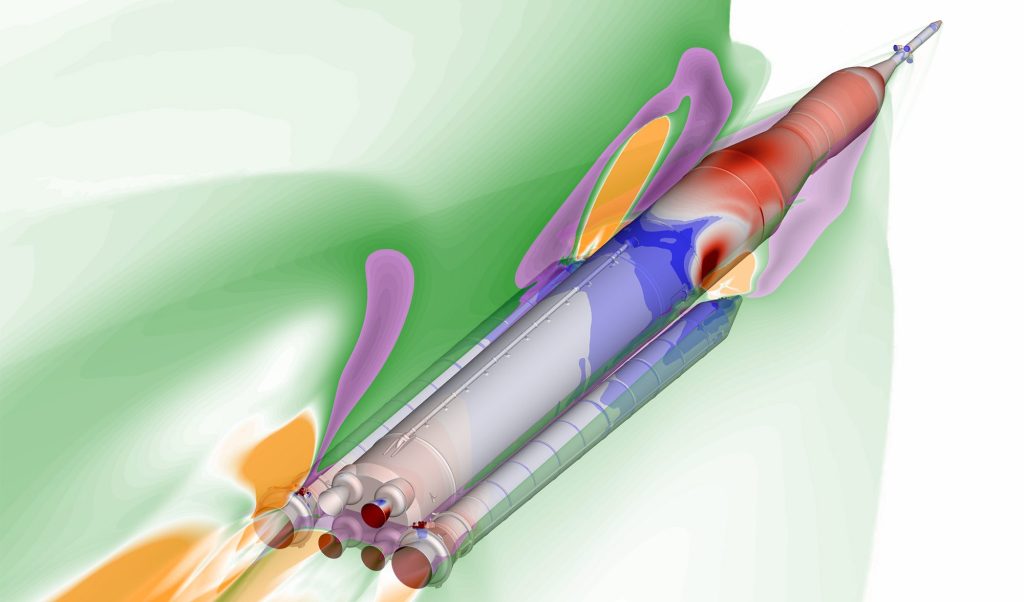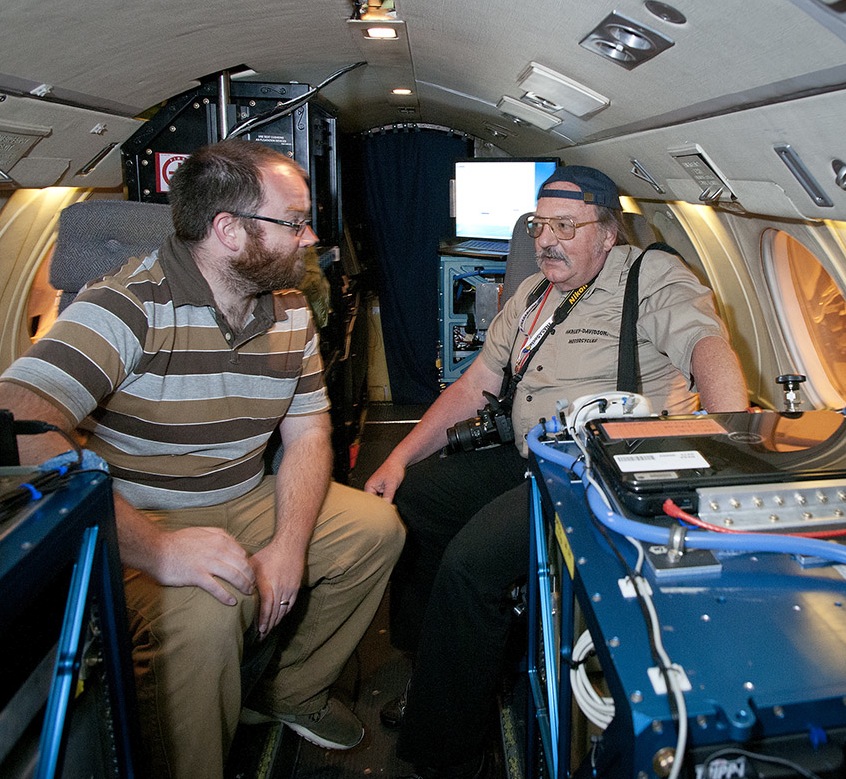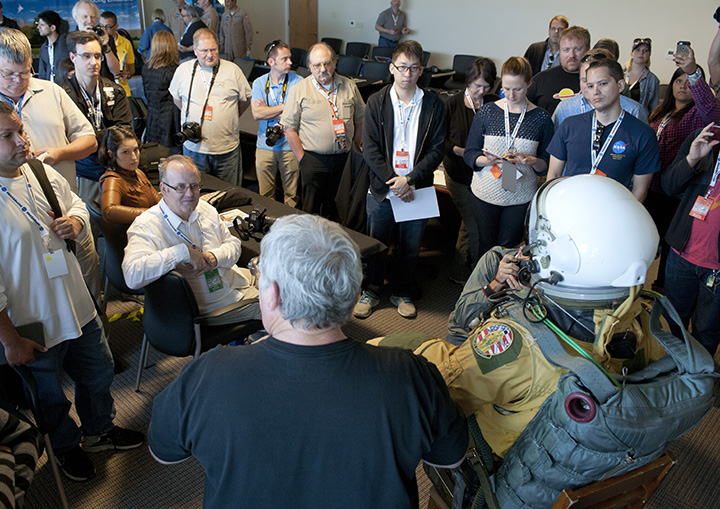Social and traditional media will get a closer look at what NASA is With You When You Fly means during a two-day event at NASA’s Armstrong Flight Research Center at Edwards Air Force Base.
The NASA Aeronautics Research Mission Directorate Social event, which begins Tuesday, Nov.18 and concludes on Wednesday, Nov.19, features past, current and future NASA flight technologies of which many have influenced and revolutionized the aviation industry.
One such technology is the NASA-developed Automatic Ground-Collision Avoidance System. The technology could significantly reduce the incidence of aircraft flying into terrain when it is fully integrated into the flight control systems of the U.S. Air Force’s fleet of F-16 fighter aircraft.
Extensive flight testing at NASA Armstrong demonstrated the advanced computing technology could significantly reduce the number of accidents attributed to controlled flight into terrain, a leading cause of fatalities in civilian and military aviation that results in about 100 fatalities a year in the United States. Cockpit warning systems have virtually eliminated these kinds of accidents for large commuter aircraft, but this could meet the challenges still existing for fighter aircraft, helicopters and general aviation.
Another presentation will look at NASA Armstrong’s latest test projects, including the Adaptive Compliant Trailing Edge flexible wing flap. Researchers believe a pair of experimental morphing flaps for the ACTE project flown on a NASA Gulfstream III aircraft can make future airliners quieter and more fuel-efficient.
This past summer researchers replaced an airplane’s conventional aluminum flaps with advanced, shape-changing assemblies that form seamless bendable and twistable surfaces. Flight testing will determine whether flexible trailing-edge wing flaps are a viable approach to improve aerodynamic efficiency and reduce noise generated during takeoffs and landings.
Included in the two-day event is a look at the NASA Global Hawk aircraft. NASA uses the autonomously flown vehicles for science research missions, like the recently completed Hurricane and Severe Storm Sentinel mission over the Atlantic Ocean. The study to learn more about how tropical storms form and intensify into hurricanes was based at NASA’s Wallops Flight Facility in Virginia.
Also on the schedule is a discussion about NASA’s C-20A aircraft, which is based at NASA Armstrong’s facility in Palmdale, California. One of the aircraft’s missions was to conduct an airborne survey Aug. 29 of earthquake fault displacements in the Napa Valley area of Northern California using a sophisticated radar system developed by NASA’s Jet Propulsion Laboratory in Pasadena, California. An earthquake shook the region on Aug. 24.
NASA Social attendees also will visit the Sub-Scale Aircraft Shop, where aircraft concepts become flyable scaled-sized prototypes. Attendees will see and learn about some of the technology developments.
An example is the Towed Glider Air-Launch System. The first flights of the one-third-scale twin fuselage towed glider took place Oct. 21 from NASA Armstrong. The aircraft was towed into the sky by another remotely-piloted aircraft called the DROID, which also resides at the Sub-Scale Aircraft Shop.
A prototype twin-fuselage towed glider could lead to rockets being launched from pilotless aircraft at high altitudes. The technology application could significantly reduce the cost and improve the efficiency of sending small satellites into space.
In addition to interactive briefings, participants will be able to tour the center to see its aircraft and walk through its support facilities. On the tour participants will have opportunities to ask questions of the aircraft crew, engineers and pilots involved in flight research and experience an interactive demonstration of a high-altitude flight suit.



























